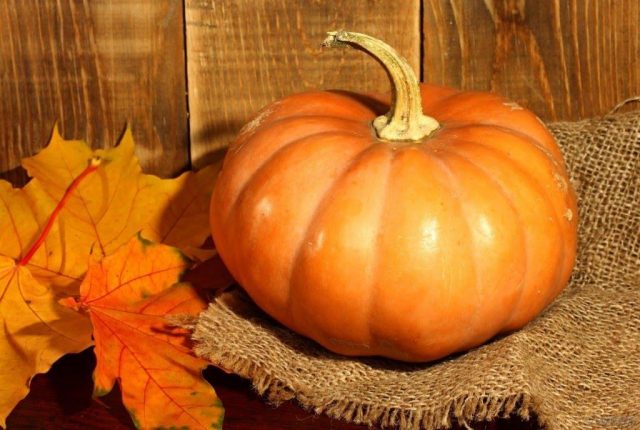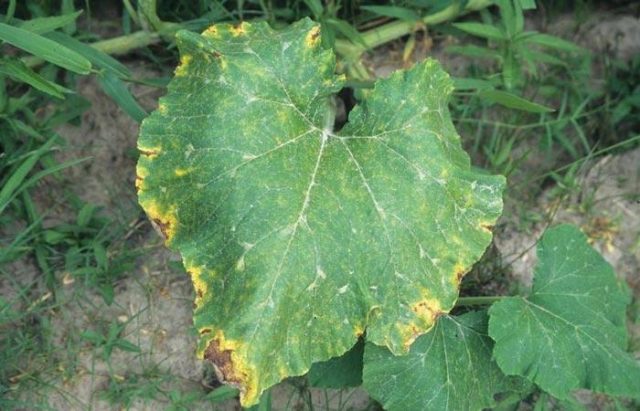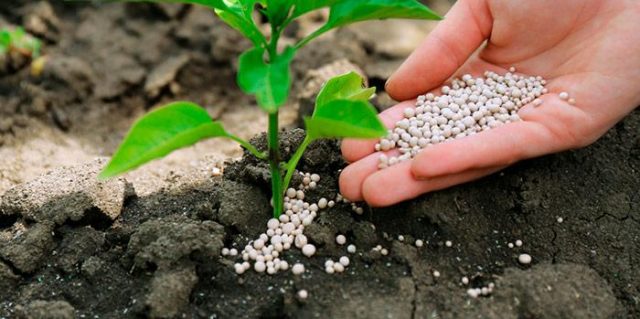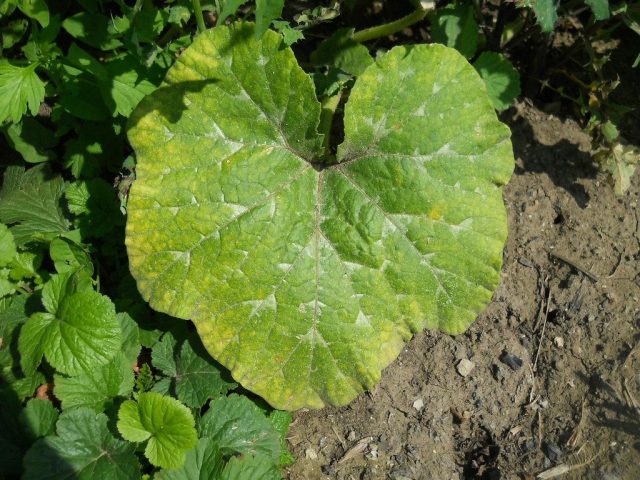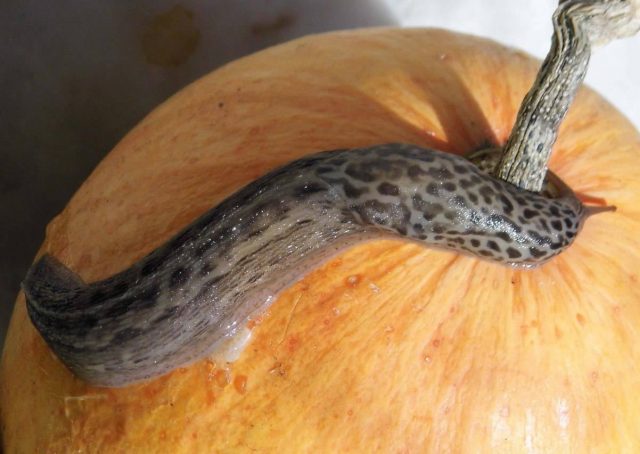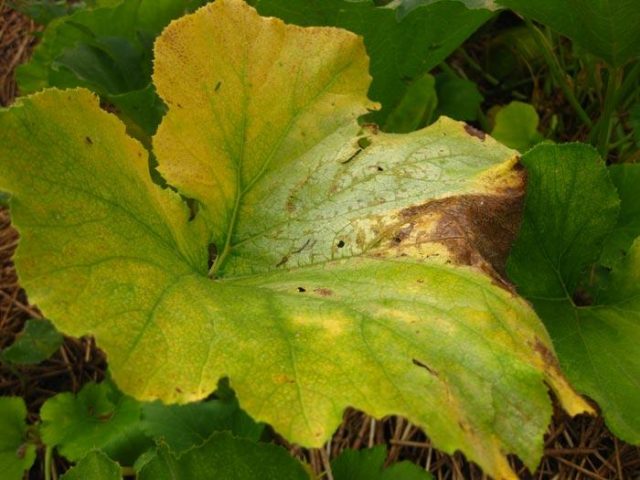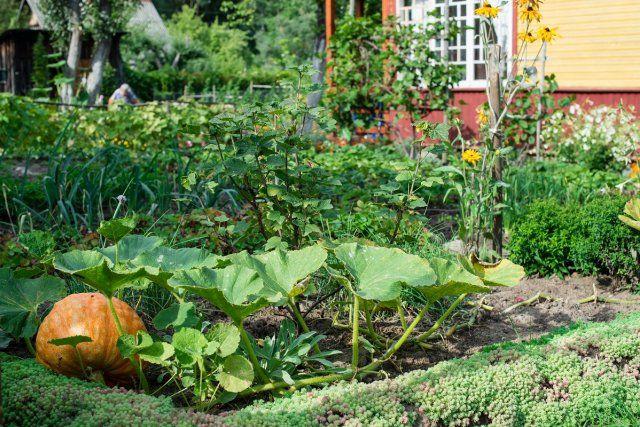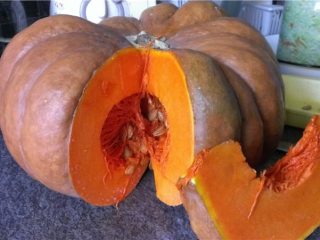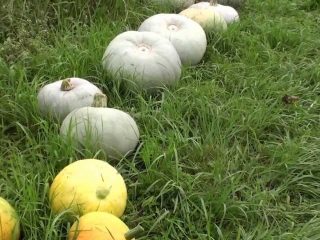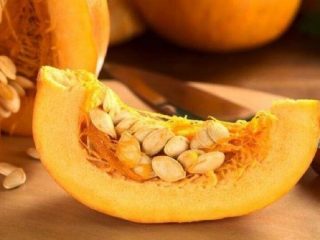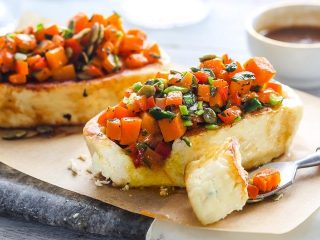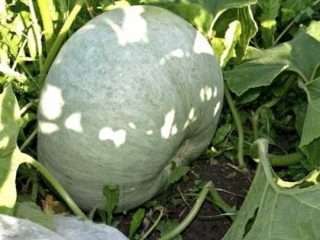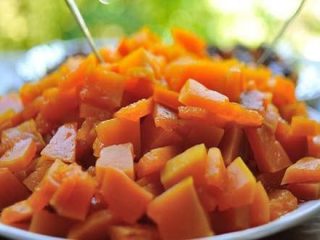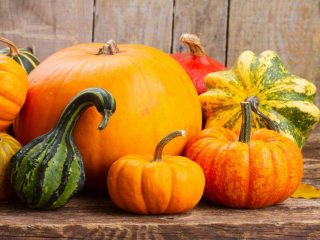Content
Growing pumpkin on a personal plot or summer cottage is associated with the characteristics of the culture. Pumpkins have a long growing season, which can last up to 150 days. During the formation and ripening of fruits, the crop consumes an increased amount of nutrients from the soil, so it needs regular feeding. Pumpkins turn yellow for various reasons: sometimes it can be due to a lack of useful elements, sometimes it is evidence of disease.
Possible causes of yellowing pumpkin leaves
Pumpkins are grown by seedlings and seed methods. This depends on the characteristics of the variety, as well as on the climatic conditions of the region. In the southern territories, seeds are sown in open ground, but in the north of the country only the seedling method is used. The reason for yellowing of pumpkins may be hidden in violation of planting technology, lack of pre-sowing preparation and much more.
The problem of yellowing leaves can be easily dealt with if the cause is identified in a timely manner and the necessary measures are taken. At the growing stage, the seedlings turn yellow due to lack of light.To provide seedlings with optimal conditions for growth, they are provided with at least 10 hours of daylight. In the absence of natural light, lamps are installed above the seedlings.
Weather
One of the main reasons why pumpkins turn yellow can be temperature fluctuations. This natural factor is difficult to influence, but you can help the plant adapt faster. The pumpkin turns yellow if there is a sudden change in temperature:
- the air temperature during the day dropped to +10 °C;
- a long drought gave way to a sharp cold snap;
- there were frosts at night.
When return frosts occur, the pumpkin turns yellow after freezing. As a rule, this applies to the tips of the leaves and those lashes that are on the ground.
Nutritional deficiencies
Lack of nutrition is one of the most important items on the list of causes. This is a unique crop; for its full development, it needs fertile soil, from which it receives the maximum amount of nutrients.
At different stages of development, the crop needs to be supplemented with a variety of fertilizers. To prevent wilting and yellowing of leaves, a special schedule of necessary fertilizing has been developed for pumpkin:
- After planting, the bush is fed when the 5th - 6th leaf appears, and organic fertilizers are applied.
- Before flowering, fertilize with organic fertilizers and mineral mixtures with a high potassium content.
- When flowering, additional root feeding with potassium compounds is necessary.
- During the fruiting period, pumpkins need to be supplemented with potassium, phosphorus, and calcium.
These are the main feedings that must be carried out. If the soils of the region in which the pumpkin is grown are not rich in nutrients, then fertilizing is carried out more often.
The green mass is processed foliarly, vitamin compositions are sprayed from a spray bottle.
Diseases
Pumpkin is considered resistant to many diseases, but if it becomes infected, it can be quite difficult to cure.
Among the dangers that cause pumpkins to turn yellow, fungal infections occupy a special place. They develop quickly, and the source of the disease is difficult to detect. Infection begins deep in the soil: the fungus primarily affects the root system.
- Bacteriosis. It begins to appear as slight yellowing of the leaves, which quickly turn brown. Spots appear on the back of the plates, then they dry. The infection takes over the entire plant: the fruits do not develop according to the usual scenario, but begin to deform and become covered with dry spots;
- Powdery mildew. One of the most dangerous diseases for vegetable crops of various types. On the pumpkin it begins to appear with the appearance of a whitish coating. As a concomitant symptom, the green mass turns yellow. The scourges gradually wither and dry out. This leads to a complete loss of pumpkin immunity, so at this stage insects and other diseases can join the main disease;
- White rot. The first stage begins with a slight yellowing of the leaf plates along the edges, then they become covered with a white coating. At the next stage, the plaque becomes slimy and rotting begins. White rot spreads throughout the plant: stems, leaves and fruits are affected;
- Root rot. A characteristic sign of the disease is yellowing of the lower leaves of the pumpkin.This is due to the fact that the root system is at the stage of decay; the parts of the plant closest to the roots are the first to be affected. The lash gradually turns yellow, starting from the central stem. This is due to the inability of the roots to provide parts of the plant with nutrients and the minimum set of nutrients necessary for growth;
- Yellow mosaic. This disease affects young bushes. The leaves turn yellow and curl at the edges. The fruits become distorted when formed, then become covered with mosaic spots. The bushes grow slowly and do not respond to additional fertilizing, since, most often, they are not able to absorb useful elements.
There can be several reasons for getting fungal infections. These include:
- Violations of watering rules. Overmoistening of the soil leads to rotting of the roots. In addition, watering with cold water may be a risk factor. Plants often begin to get sick if they are not watered for a long time and then watered abundantly.
- Failure to comply with crop rotation. Planting pumpkins in the same area for several years in a row is excluded. This leads to soil depletion and loss of protective mechanisms.
- Spread of fungus weeds and insects. When growing pumpkins, it is recommended to weed the areas in a timely manner and ensure that the soil is loosened.
Pests
Pumpkin leaves turn yellow if the plant is attacked by insect pests.
- Spider mite. This is the most common type of driver. It entangles leaves and stems with cobwebs and feeds on plant sap. This leads to yellowing of the leaves and their gradual wilting. Then the leaf plates dry out and crumble. The skin of the formed fruit begins to crack.
- melon aphid. These insects prefer to settle on the underside of leaf blades. First the leaves turn yellow, then wither and fall off. Aphid colonies grow very quickly. Clutches of eggs can be found on all parts of the plant. The fight against aphids can be complicated by the fact that after removing the adults, invisible larvae remain on the plant.
- Slugs. Pests appear on pumpkins in cloudy rainy weather. They begin to eat parts of the plant, causing the remaining ones to turn yellow and wither. Slugs are easy to spot with careful inspection, but the consequences of their appearance are difficult to deal with.
What to do if pumpkin leaves turn yellow
When signs of disease or insect infestation are detected, various agricultural practices are used. Their choice depends on the stage of development of the problem and the state in which the pumpkin is located.
With temperature changes
If the reason that the pumpkins have turned yellow is a cold snap, then gardeners advise additionally covering the pumpkin with industrial materials. At the same time, during the time that the pumpkin spends under additional cover, it is periodically ventilated, since the accumulation of condensation on the film can damage the plant.
The reason for yellowing may be hot sunny weather. Leaf blades turn yellow and begin to dry out if burns have formed on them. Exposure to direct sunlight, especially on moistened leaves, and then intense evaporation of moisture in the hot sun - all this leads to the entire surface of the leaf turning yellow, and not just its edges. If the region experiences hot weather with a scorching sun, it is better to shade the pumpkins. This method will protect the plant from burns.
For lack of nutrients
The lack of nutrients can be quickly compensated. If the pumpkin turns yellow because of this, then nitrogen-containing complexes are added to the soil to increase green mass.
At the stage of fruit formation, it is recommended to use potassium chloride and superphosphates.
How to treat diseases
If the pumpkin has turned yellow due to fungal or bacterial infections, control measures include different types of treatment.
| Disease | Control measures |
| Bacteriosis | ● treatment with 1% Bordeaux mixture; ● destruction of infected parts; ● compliance with the principles of crop rotation. |
| Powdery mildew | ● spraying with a solution of colloidal sulfur (20 g per 10 l); ● adding mullein solution to the well; ● treatment with “Topaz”. |
| White rot | ● weed removal; ● sprinkling the soil with wood ash and chalk; ● treatment with copper sulfate. |
| Root rot | ● changing the top layer of soil; ● treatment of the aboveground part with wood ash; ● treatment of the root collar with a 1% solution of Furdanozol. |
| Yellow mosaic | ● processing of seed material, disinfection; ● spraying with antifungal drugs. |
Pre-sowing preparation is considered one of the methods of preventive work. Seeds must be treated with disinfecting solutions, hardened, and checked for germination. These activities enhance adaptive qualities.
The soil in which pumpkins are grown must be disinfected if infected plants grew on it in the previous season. Full compliance with crop rotation is necessary. Pumpkins are not planted after zucchini, melon, and watermelon.The following are considered good neighbors for pumpkins: tomatoes, carrots, eggplants.
How to treat pests
The best measure to protect crops from pests is preventive measures. They are carried out at the initial stage of plant development, when the adaptation period is already behind.
Treatment with decoctions of phytoncidal herbs is considered a good remedy. They prevent the proliferation of aphids and the appearance of mites.
Insecticides are used to destroy emerging pests. Processing, as a rule, takes place in several stages, since after the destruction of noticeable individuals, larvae may remain on the pumpkin.
Slugs must be removed from pumpkin leaves by hand, otherwise they cannot be gotten rid of. Then the bushes are treated with solutions of tobacco or laundry soap to prevent their return. For solutions with tobacco, the leaves are infused for several days, then sprayed. For the soap solution, use laundry soap. The shavings are dissolved in warm water and sprayed onto the leaves.
Conclusion
Pumpkins turn yellow for many reasons. If you prepare seed material and also process adult plants in a timely manner, then the death of the plant or loss of part of the harvest can be avoided.
